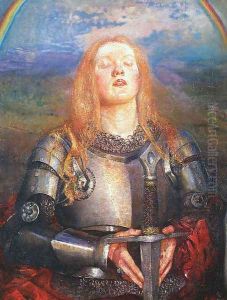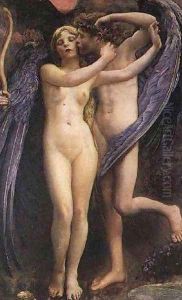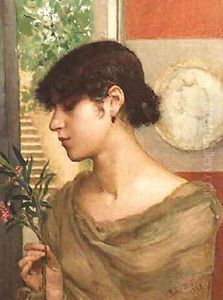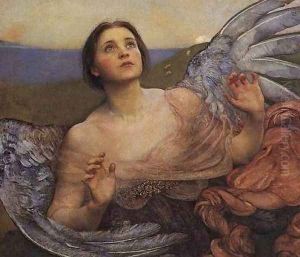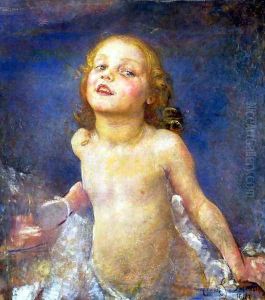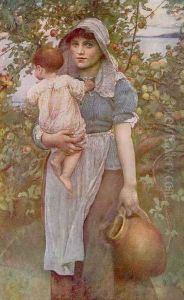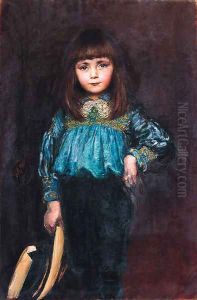Annie Louise Swynnerton Paintings
Annie Louisa Swynnerton (née Robinson) was a pioneering English painter, born on 26th February 1844 in Hulme, Manchester. She was a significant figure in the British suffragette movement and an advocate for women's rights, particularly in the realm of art. Swynnerton's early life was marked by a passion for art, leading her to attend the Manchester School of Art. Her ambition and talent propelled her further, and she continued her studies in Rome, where she was influenced by the vibrant Italian light and landscape, as well as the classical and Renaissance masters.
Swynnerton's career was characterized by her innovative use of color and light, aspects that set her apart in the predominantly male-dominated art world of her time. She was not only a portraitist and painter of mythological and allegorical subjects but also a keen observer of the social conditions of women. Her work often depicted strong, independent women, reflecting her feminist ideals. In 1883, she married fellow painter Joseph Swynnerton, and they lived between England and Italy, which further enriched her work's stylistic and thematic diversity.
Annie Swynnerton was a founding member of the Manchester Society of Women Painters and played a crucial role in advocating for the inclusion of women in the art profession. Her efforts, alongside others, gradually led to the acceptance of female artists in professional circles. In 1922, her achievements were recognized when she became the first woman to be elected as an Associate Member of the Royal Academy of Arts since its inception in 1768, a landmark moment in the history of British art.
Swynnerton's legacy is marked by her contribution to breaking gender barriers in art and her distinctive painting style that blends realism with impressionistic touches. Despite facing societal and professional obstacles, she achieved significant recognition in her lifetime. Annie Louisa Swynnerton died on 24th October 1933, leaving behind a body of work that continues to inspire and resonate with audiences, particularly in the context of feminist art history.
